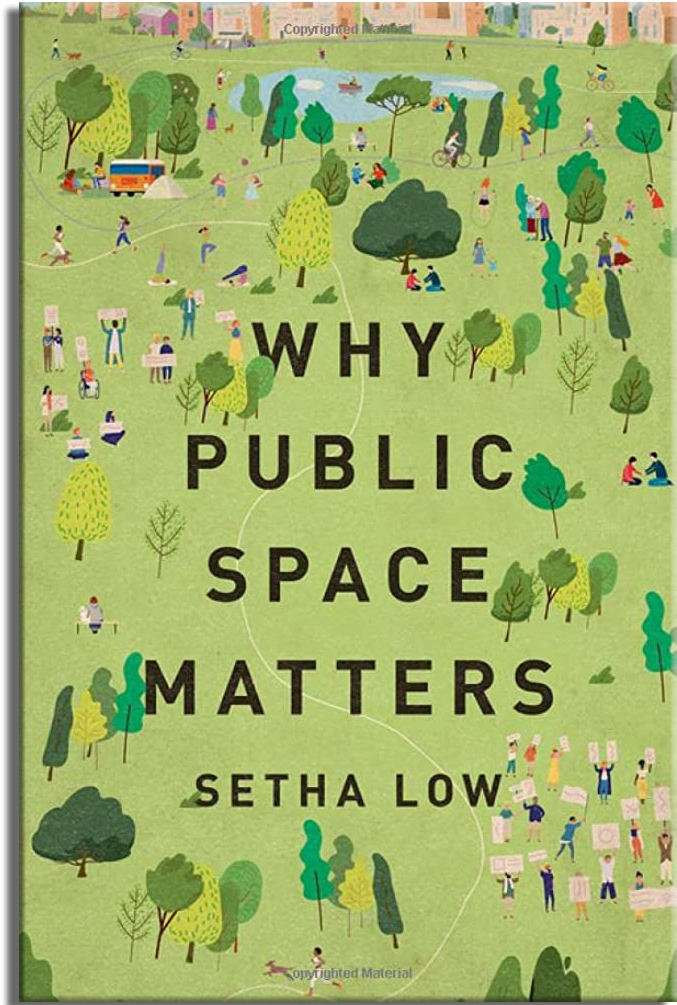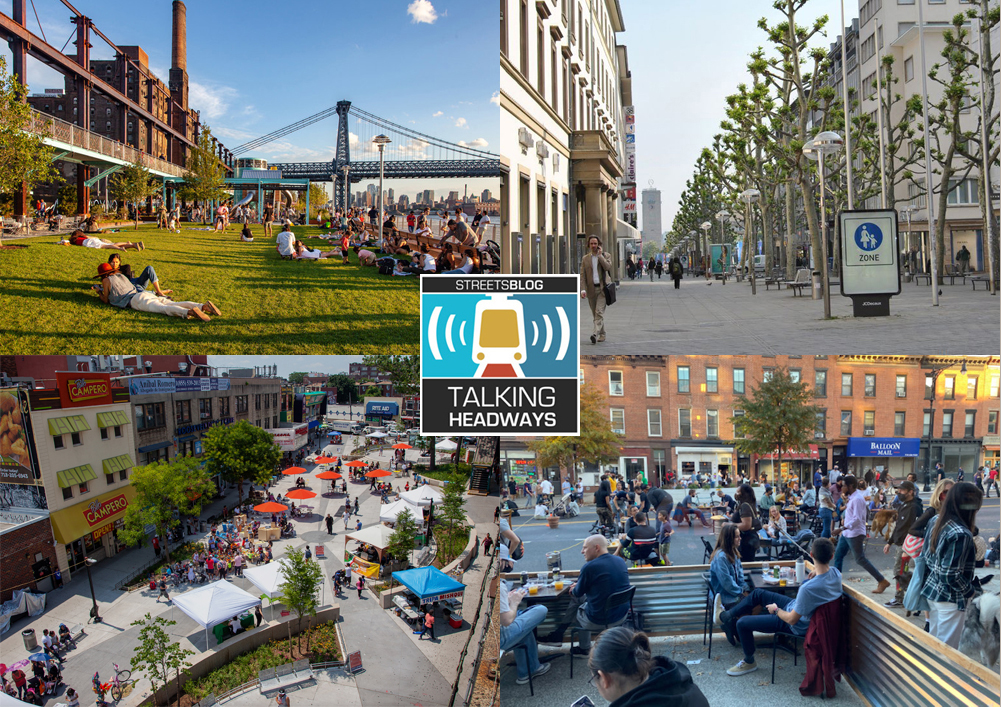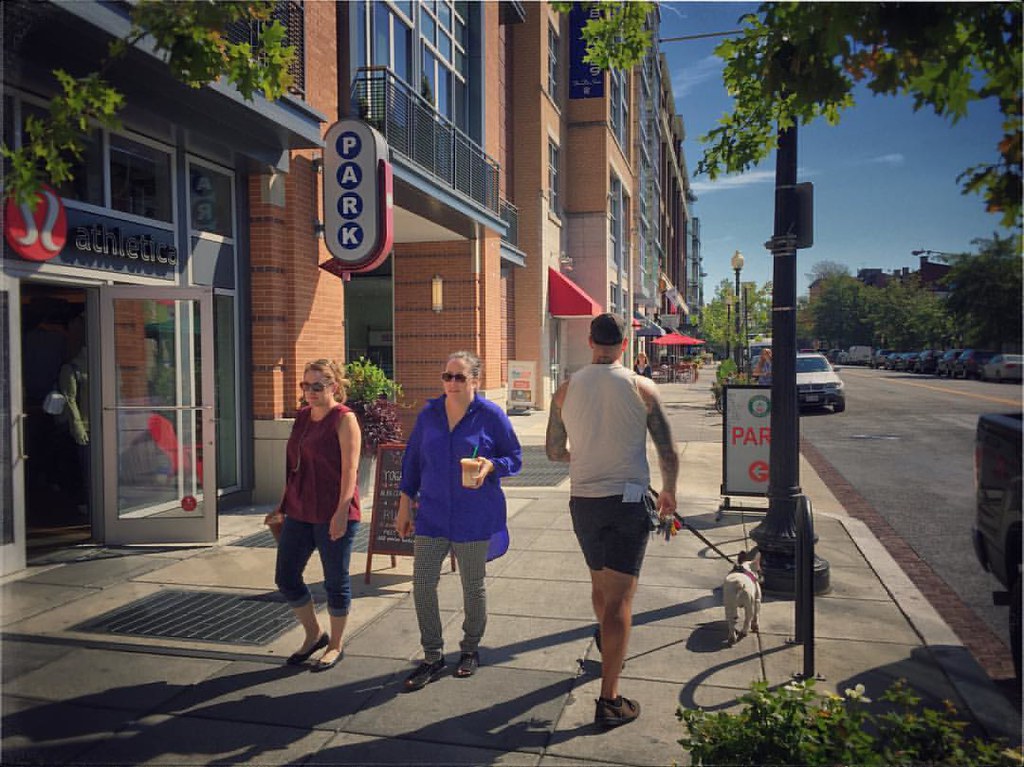This week, we’re joined by Setha Low to talk about her book, Why Public Space Matters. We chat about using ethnography to understand space, emotional connections, and transforming the world through public space.
See below for an excerpt from the episode. A full, unedited transcript of our conversation can be found here.
Jeff Wood: In the book you talk about the histories of that place. It starts many, many centuries before. Bringing together all those histories and telling one story and acknowledging the people that came before, I think is an important point.
Setha Low: I think that’s really critical. Ultimately, if we want to talk about public space and social justice, it’s going to be in those histories and meanings, and accepting and respecting that many people are responding to places in many, many different ways, yet sharing it all together.
It’s a metaphor, but it’s also real. It’s material. It is not just metaphor. It really happens. And when you go to a concert or you go to Yankee game and you do all come together there, that does change things. These moments are not, I don’t think, so trivial. I think they’re the basis on which, again, back to your scaler model, these geographies of relationship exist.
I know my students write about un-geographic places, places that are made that are sort of seen as not part of the geography. And that’s been very interesting, recently, people writing about people who can’t claim a geography and sort of the reverse of what we’re talking about. But that to me is also on the other side of claiming geography and understanding its meanings and feelings, to think about people who cannot claim a geography or even are seen as un-geographic, by that I mean not having a place.
Jeff Wood: I hadn’t thought of that. Is there an example?
Setha Low: A person I was talking to the other day was talking about women in Arctic cities, and that we often think of the Arctic not as a place, as a geography. And she has all this evidence that a lot of [Katherine] McKitrick's work on Black geographies is the un-geographic nature of African-American life as it was imagined. Part of the current movement is to place and claim geographies as Black geographies that are meaningful. Romani people, who are seen as just some un-geographic and, and yet have very, very rich geographies that are not perceived.
There's a very simple idea I write about, that people’s histories are torn down as if somehow, whether they live there or not, those histories aren’t important and those geographies aren’t kind of theirs. We have that a lot in New York, right? I mean the Lower East side, is it Chinese or Latino, and how much? The claiming of a geography — the geography — of relationship is not clear or is denied.
Jeff Wood: And it changes over time. I mean, it’s interesting. In the San Francisco neighborhood that I live and places nearby, a lot of my family members from long past lived here, and they were Italian-Irish, but now much of the neighborhood of say like the Mission is seen as a Latino, right? So it, you know, it changes over time, those kind of geographies and, and what people associate with them. It’s really fascinating.

Setha Low: And then the big question is, you know, whose geography does it become? I mean, the Mission has become pretty much the Central Americans, but what happens to those earlier memories? I’ve tried to talk about how are we gonna do that and you know, the sort of monumentalizing the symbolic components of place.
Going back to what you were saying about Statue of Liberty. All our issues with monuments and claiming whose histories are expounded, and whose histories are recorded, and whose histories stay embedded in a place.
Jeff Wood: There’s so many remnants too, right? Like, so there was a ravioli pasta place nearby called Luca that just recently closed that was very Italian and where family members used to go to get their crusta to roll out the ravioli, but it’s gone now. All there is is a sign painted on the side of a building. Things that disappear over time are painted over, they’re covered over. You can see glimpses when you tear things down. That feels like a part of the historical geography, too — how places evolve. I mean, San Francisco at some point, you know, the only folks were here were Native American. Paces grow change over time. The diaspora happens, people go to the suburbs, etc. It feels like a whole other conversation even.
I do want talk about history. I mean like some of the things that you talk about in terms of history go back as far as like 11,000 BC I mean this history is long ranging and I’m wondering, you know, what we can take away now from the history of public space to think about, you know, our present situation.
Setha Low: There have always been open spaces, and they were public in some sense of that. What’s really great is that we have a lot more archeological places in East Africa, in South Africa, in Central America. I think as far back as, I think, 15,000 years, there was the very first public space that which was surrounded by houses and used in different ways. So, what does it mean? It means that human beings have always had spaces where they came together and where they mixed. And some were very utilitarian, some were ritual, some were places of work, some were places to grow food.
Human settlements and human people have always had spaces to come together, sometimes for conflict, often for, you know, ballgame or fighting by ballgame. As far back as we can look at the archeological record, there has been public space and it has been a place where people came together.






